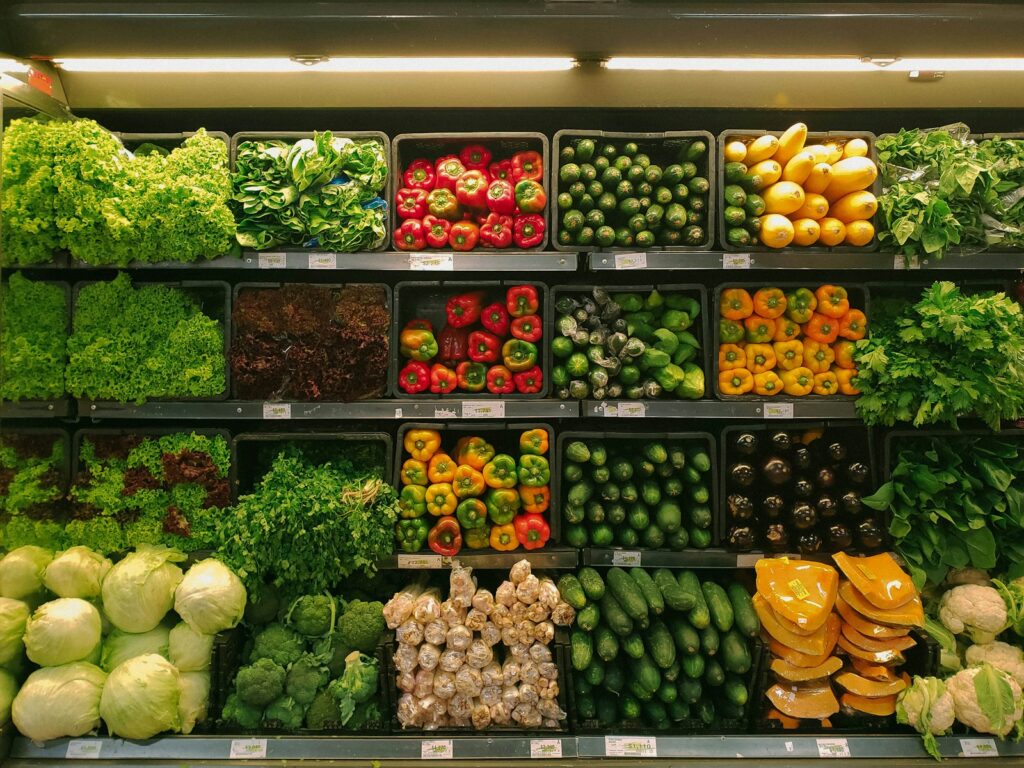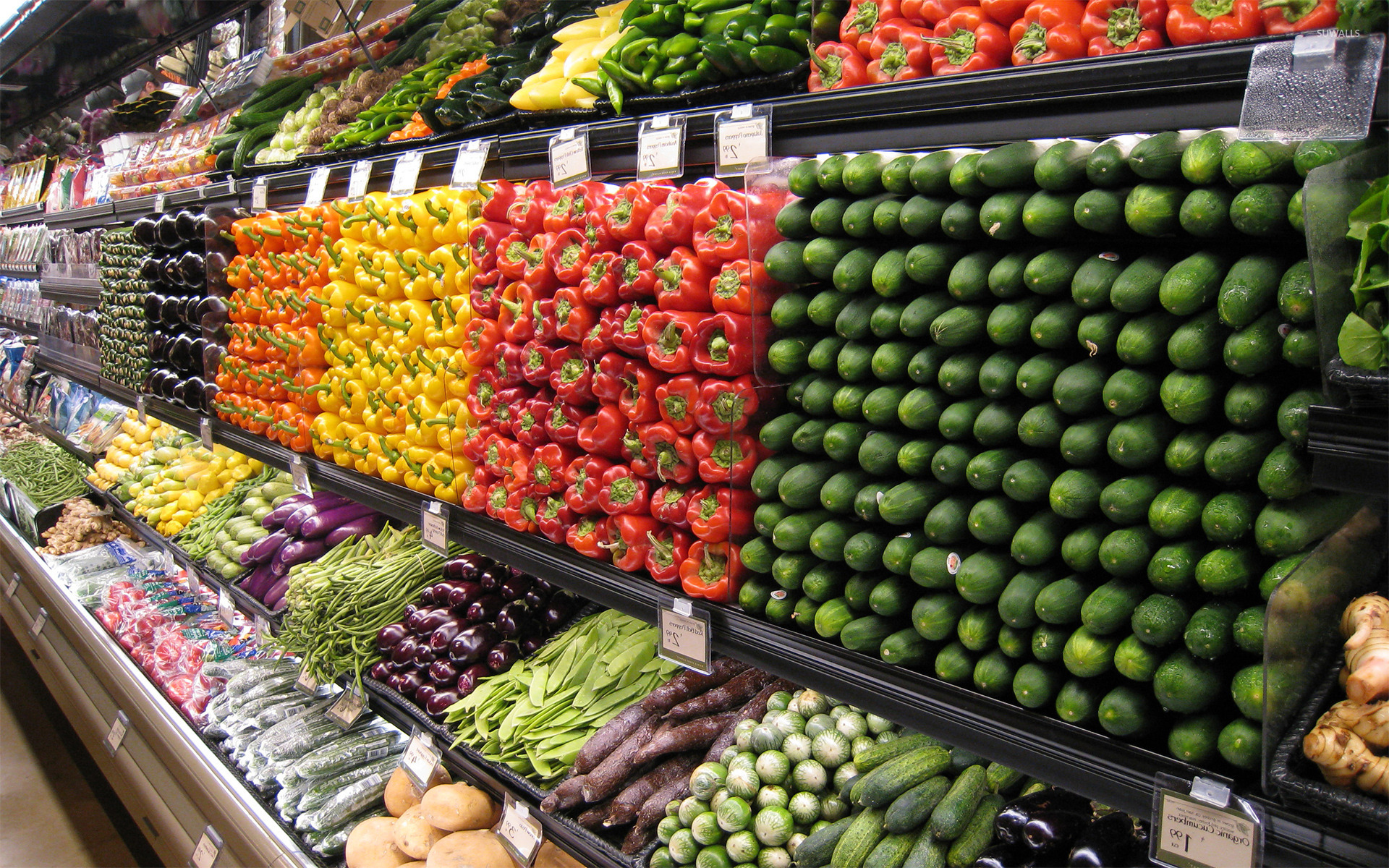
Have you noticed your grocery bill creeping higher and higher, even when you feel like you’re not buying anything extraordinary? You’re not alone! Inflation may have slowed a bit, but prices are still on the rise, and at-home food costs are certainly feeling the pinch. According to the U.S. Bureau of Labor Statistics, at-home food prices increased a notable 3.7% between August 2022 and September 2023 alone. As money expert Jade Warshaw from Ramsey Solutions wisely notes, it seems these higher prices, much like shrinkflation, might be here to stay. This means we all need to be a little savvier when filling our carts.
Supermarkets are masters of temptation, designed with enticing displays, colorful packaging, and offers that often seem too good to resist. We’re all drawn to convenience, especially in our busy lives, and that’s precisely how these stores can subtly encourage us to spend more than we need to. While those quick-fix solutions promise to save you time, they often come with a hefty hidden cost, and sometimes, a sacrifice in quality too. If you’re buying everything at the grocery store out of habit, you might be making a bigger mistake than you realize.
The good news is you have the power to change this! The key to saving money without sacrificing the nutritious and delicious foods you love is to be strong, be smart, and know which items are best left out of your grocery cart. We’ve done the research, gathered expert insights, and compiled a definitive list of 13 common supermarket buys that are a huge waste of your hard-earned cash. Get ready to transform your shopping habits and watch those savings add up!
1. **Pre-Cut Fruits and Vegetables**Those brightly colored containers of pre-cut fruits and vegetables certainly look appealing, especially when you’re short on time and dreaming of whipping up your favorite soups or stews. They promise ultimate convenience, ready to be tossed into your dish with no chopping required. However, that saved time comes at a significant premium that can quietly inflate your grocery budget.
According to money expert Jade Warshaw, you could easily be paying up to three times more for the privilege of having someone else do the chopping for you. Think about it: a bowl of pre-cut fruit might set you back more than $6.50 per pound. If you pick up a 3-pound tub, you’re looking at almost $20 for something you could prepare yourself for a fraction of the cost.
Beyond the exorbitant price, there’s another important consideration: freshness. Pre-cut produce tends to spoil much faster than whole fruits and vegetables because of increased exposure to air. This means that not only are you paying more upfront, but you’re also at a higher risk of throwing away food (and money) if it goes bad before you get a chance to use it.
So, what’s the smarter strategy? Instead of reaching for those overpriced containers, opt for whole fruits and vegetables. If you have a few favorite fruits or veggies you know you’ll use regularly, dedicate a bit of time once a week to peeling and chopping them yourself. A sharp knife and a few minutes of meal or snack planning can save you a substantial amount of money over time, ensuring your produce is fresh and your wallet happier.
Read more about: Your Practical Guide to a Plastic-Free Home: 14 Simple Swaps for Everyday Life

2. **Out-of-Season Produce**There’s a certain allure to finding vibrant strawberries in December or juicy watermelon in the dead of winter. Supermarkets often make it possible to enjoy a taste of summer year-round, but this convenience comes with a significant price tag. When you buy fruits like strawberries, blueberries, or melons out of their natural season, they’re typically being shipped from much farther away, and those transportation costs are passed directly onto you.
Consider a prime example: a pint of strawberries that might cost you $1.99 during its peak summer season could jump to $4.99 in October at the same local grocery store. That’s a massive price hike for produce that might not even taste as good as its in-season counterpart. It’s a clear indicator that buying based on availability rather than seasonality can seriously impact your budget.
Courtney Alev, a consumer financial advocate for Credit Karma, suggests a simple solution: only purchase items that are currently in season. This means saying goodbye to strawberries in the fall and instead embracing seasonal treasures like apples and pears. As winter arrives, you can switch your focus to oranges and pineapples, which are typically more abundant and affordable during those months.
For an even better deal and often superior quality, Alev also recommends making a trip to your local farmers market whenever possible. You might be pleasantly surprised to discover significant savings on certain items when you buy directly from local farmers. This approach not only saves you money but also supports local agriculture and ensures you’re getting the freshest possible ingredients for your meals.
Read more about: Slash Your Grocery Bills in 2025: 14 Smart Ways to Eat Well for Less

3. **Supermarket Spices**Think about how often you reach for staples like salt, cinnamon, or oregano in your cooking. These essential spices are used almost daily in many kitchens. While a trip down the spice aisle at your regular grocery store might seem like the natural place to restock, those small, unassuming bottles can surprisingly drain your budget, running anywhere from $3 to $5 each. Over time, these costs add up significantly.
What many savvy shoppers have discovered is that you’re often paying a huge premium for the brand name and the convenient supermarket shelf. The good news is there are much more economical options available that offer the same, if not better, quality. Places like discount grocery stores, such as Aldi, can offer these same spices for as little as 49 cents each, with most costing less than $2. Imagine, for the price of one supermarket bottle, you could stock up on three or four essential spices!
Even greater savings can be found at specialty stores, particularly local Asian or Middle Eastern markets. These stores often carry a wider variety of spices in larger quantities at significantly lower prices, as they cater to communities that expect good value for these regularly stocked products. As food blogger Rose Sioson of Deliciously Rushed advises, “I shop for spices in bulk bins or at local Indian or Middle Eastern markets. You can get triple the quantity for a fraction of the cost, and the freshness is typically better, too.”
While buying in bulk is fantastic for savings, it’s wise to remember that spices do have a shelf life. Ground spices generally maintain their flavor and aroma for about two to three years before they start to lose their potency, according to the USDA. So, while you can save big, only stock up on quantities you’re confident you’ll use within that timeframe. This way, you ensure both maximum savings and maximum flavor in your cooking.
Read more about: Slash Your Grocery Bills in 2025: 14 Smart Ways to Eat Well for Less
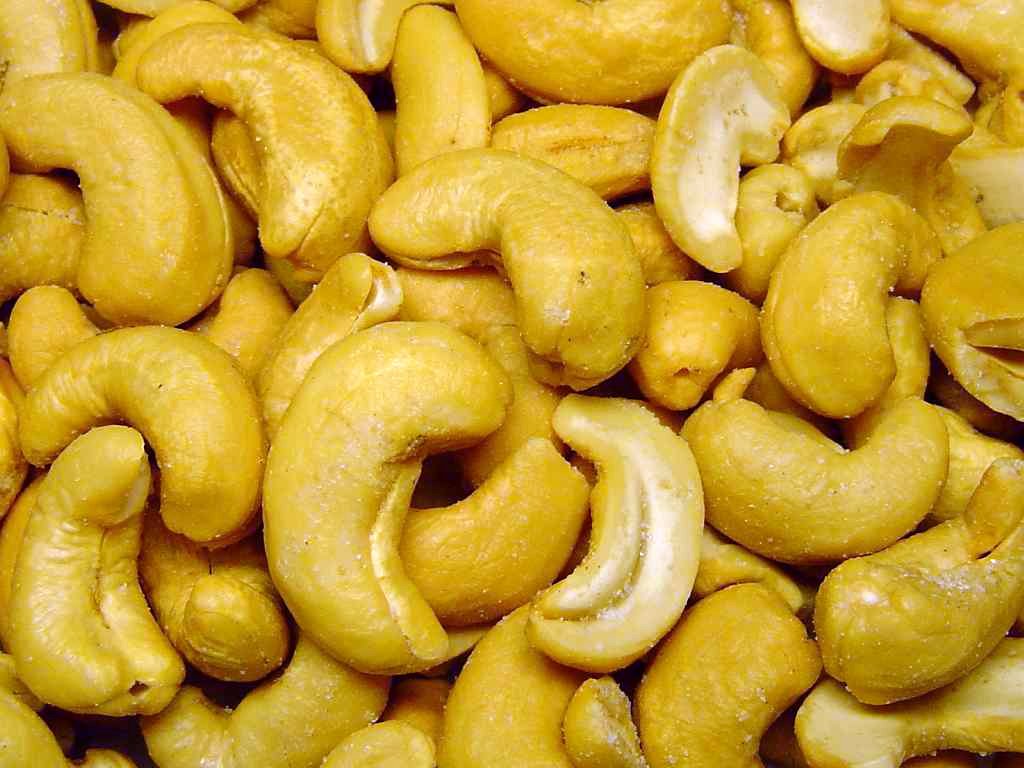
4. **Single-Serve Snack Packs**In our fast-paced lives, the appeal of pre-portioned snack packs is undeniable. They promise convenience, controlled portions, and easy grab-and-go solutions for lunches or busy afternoons. However, this seemingly helpful convenience comes with a hefty financial cost that can quickly inflate your grocery bill. Unfortunately, as author Emily Guy Birken of *End Financial Stress Now* explains, “you’re paying a huge premium for the convenience and cuteness factor.”
Let’s look at a concrete example: a standard 12.4-ounce box of Cheez-Its might cost around $4.79 at many supermarkets. But if you opt for a 12-pack of individual Cheez-Its, which is nearly the same total weight, you could be paying a staggering $9.79. That’s more than double the price for essentially the same product, just divided into smaller, fancier bags. This stark comparison highlights how quickly the “convenience premium” adds up, especially if these are staples in your household or packed frequently for school or work.
Fortunately, there’s a simple and more budget-friendly alternative that doesn’t require you to give up your favorite snacks. Instead of buying pre-packaged portions, purchase your snacks in larger quantities. Then, invest in some reusable baggies or a pre-molded lunch box to portion them out yourself. As Birken suggests, this simple switch leads to “a much healthier body and wallet.”
This small change in habit can lead to significant savings. In fact, one entrepreneur, Bert Hofhuis, noted that by stopping the purchase of snack packs and pre-cut items and preparing things himself, he reduced his expenses by £30 a week without compromising the quality of his family’s meals. It’s a powerful reminder that a little effort in preparation can translate into substantial savings and a healthier approach to snacking.
Read more about: Stop Overpaying: Uncovering the Hidden Markups on 10 Common Grocery Items You Buy Every Time You Shop
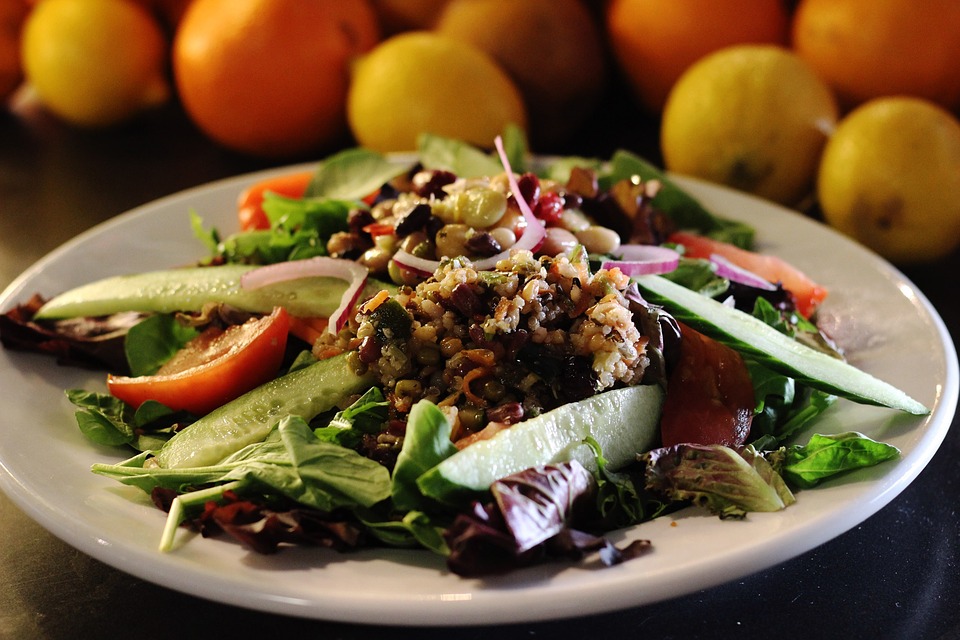
5. **Individual Servings of Rice, Quinoa, and Mac & Cheese**Just like those single-serve snack packs, individual servings of pantry staples like rice, quinoa, and macaroni and cheese might seem like a brilliant time-saver for quick meals. They’re designed for instant gratification, promising a hot meal in minutes with minimal effort. However, this level of convenience comes at an astonishingly high cost, often making them one of the biggest wastes of money in the supermarket.
Money expert Jade Warshaw emphasizes just how expensive these items truly are, noting that “These individual servings can be six times more expensive” than their larger, traditional counterparts. To put this into perspective, an 8.8-ounce package containing two individual rice cups might cost you around $2.79. Contrast that with a 14-ounce box of rice, which provides eight servings, costing only slightly more at $3.29. The value discrepancy is immense.
Rice and pasta are among the most affordable pantry staples you can buy, especially when purchased in bulk. These microwaveable pouches or cups cost many times more per serving, offering very little added value beyond the pre-portioned aspect. They are typically high in sodium and often come in smaller quantities, leaving you feeling less satisfied and certainly poorer.
The smarter approach is incredibly simple: buy your rice, pasta, or quinoa in a larger box or bag. With just a little bit of planning, you can cook a larger batch at home and then divvy it up into your own reusable containers for grab-and-go meals throughout the week. This strategy not only helps you avoid this ongoing waste but also ensures you have control over ingredients, allowing for healthier, more satisfying, and significantly more cost-effective meals.
Read more about: Mediterranean Diet vs. Keto: Unpacking the Science for Your Ultimate Long-Term Weight Loss Strategy

6. **Microwave Popcorn**For many families, movie night isn’t complete without a bowl of warm, buttery popcorn. The convenience of microwave popcorn—just pop it in, listen for the pauses, and enjoy—is definitely appealing. However, when you stack it up against buying plain kernels, those pre-packaged bags are far from a deal, especially when you consider the cost per serving and the flexibility you lose.
Typically, a six-pack of microwave popcorn at the supermarket can cost upwards of $6, unless you happen to snag a rare sale or have a coupon. Now, compare that to a large 30-ounce bag of popcorn kernels from the same brand. That generous bag will cost you around $7. The difference is stark: the six-pack box makes about 15 servings, while that 30-ounce bag of kernels yields a whopping 30 servings for just a dollar more.
Beyond the cost savings, making popcorn from kernels offers a significant health advantage. When you pop your own, you have complete control over the toppings, the amount of oil, and the type of salt or seasonings you use. This means you can create a healthier snack tailored to your preferences, free from unwanted additives often found in pre-packaged varieties. It’s a simple step that upgrades both your snack and your well-being.
While you will need to invest in a popcorn maker – whether it’s a microwave popper or a countertop air popper, likely costing between $25 and $30 – this initial outlay is quickly recouped. If your family, like many, enjoys three servings of popcorn every Friday night, making the switch to kernels can save you at least $27 a year. That’s a small change that leads to a healthier, tastier, and more economical movie night experience.
Read more about: 13 Meal Prep Fails That Prove Some Time Savers Just Aren’t Convenient — And How to Fix Them!

7. **Name-Brand Cereal**Walk down the cereal aisle, and you’ll be greeted by colorful boxes adorned with beloved characters, catchy slogans, and promises of delicious breakfasts. The iconic Cheerios honeybee, for instance, is certainly goofy and adorable, but does that justify paying $5.99 for a 15-ounce box? According to the U.S. Bureau of Labor Statistics, the price of cereals and other bakery products has jumped 6% in the past year, making those name-brand boxes an even bigger hit to your wallet.
This significant price increase is precisely why buying generic cereal brands is such a smart move. Consider the difference: a 15-ounce box of Trader Joe’s O’s, a popular generic alternative, will set you back only $1.99. The savings are immediate and substantial, and they quickly add up at the register, especially if your family consumes a fair amount of cereal throughout the week. It’s a simple switch that can dramatically trim your grocery bill without feeling like a sacrifice.
There’s often a misconception that generic means lower quality, but that’s simply not true, especially with cereals. As financial advocate Courtney Alev explains, “Generic brands can offer high-quality ingredients while helping you cut back on a few dollars here and there.” In fact, it’s a poorly kept secret in the industry that many large, national brands also produce and package the store brands you see on shelves, though manufacturers understandably tend to be tight-lipped about their specific partnerships.
While a little trial and error might be needed to discover your family’s favorite generic options, consumers consistently rave about the quality of store-brand cereals from places like Costco and H-E-B. By choosing premium store brands over their pricier name-brand counterparts, as recommended by Jean Chen of Mondressy, you can typically save 20-30% on your grocery bill each month, proving that you don’t have to compromise on quality to achieve significant savings.
Read more about: Stop Overpaying: Uncovering the Hidden Markups on 10 Common Grocery Items You Buy Every Time You Shop

8. **Diapers and Wipes**As a mom of four, I completely get it – sometimes you’re in a bind, and there’s just no choice but to dash into the nearest supermarket for a pack of diapers. Life happens, and when you’re facing an emergency, the convenience of a quick grab often outweighs the cost in the moment. However, letting this become a regular habit can seriously hurt your family’s budget, as supermarket diapers can cost as much as a whopping 50 cents per diaper! This premium adds up incredibly fast, turning a small necessity into a significant monthly expense.
Imagine the long-term impact on your wallet. For many families, this translates to hundreds, if not thousands, of extra dollars spent over the course of a child’s diapering years. Fortunately, there’s a much savvier and more economical way to handle this essential family expense. For instance, smart shoppers know that stocking up at a warehouse club like Costco can dramatically reduce costs, with prices often as low as 18 cents per diaper. That’s a massive difference: a 66-count box at the supermarket might set you back $33, but a much larger 192-count box at Costco, providing nearly three times the diapers, often costs only around $35.
Even if a warehouse club membership isn’t currently in your cards, excellent alternatives are still available to help you save. Amazon Prime members, for example, can leverage the Amazon Family program to get a solid 15% off diapers, plus the added convenience and cost-saving benefit of free shipping directly to your doorstep. This strategic move could bring your cost down to about 30 cents per diaper, making a box of 136 diapers roughly $41 without ever leaving your home. It’s a game-changer for busy parents looking to maximize their budget.
These smart purchasing strategies mean you can free up a significant portion of your budget. Think of the possibilities: those substantial savings could be earmarked for Junior’s college fund, a special family vacation, or perhaps even a much-deserved night out for yourself. By taking a few extra steps in planning and purchasing, you transform an ongoing, costly necessity into an opportunity for significant financial relief and future investment.
Read more about: 12 Shocking Airline Secrets They REALLY Don’t Want You to Know Before Your Next Flight
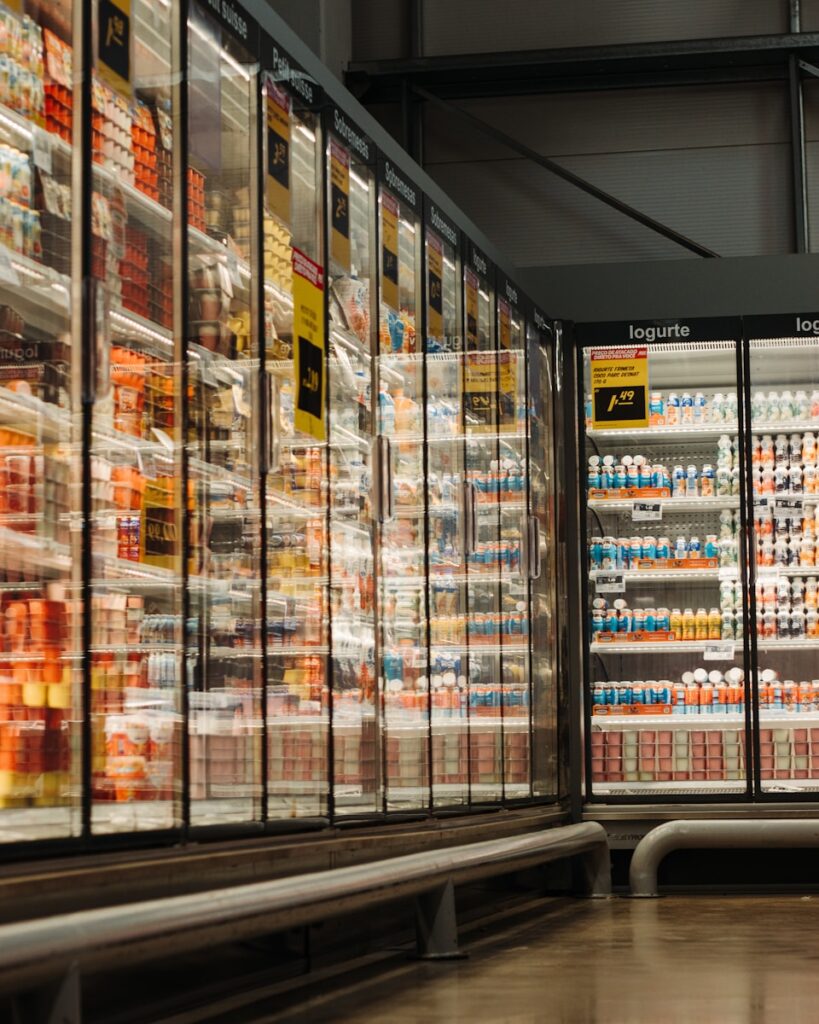
9. **Seasonal Non-Food Items**As you navigate the bustling grocery aisles, you’ll inevitably encounter those delightful seasonal products strategically placed near the cash register or at the end of key sections. These eye-catching displays, offering everything from charming patio furniture in the spring to elaborate festive decorations around the holidays, are expertly designed to tempt you into impulse purchases and, ultimately, lighten your wallet. Their appeal lies in their immediate convenience, fitting neatly into your current shopping trip.
However, as Emily Guy Birken, author of *End Financial Stress Now*, wisely advises, “Seasonal items are generally not a good buy at grocery stores.” The primary issue isn’t just the often-inflated price tag you pay for these goods, but also a significant compromise on quality that can leave you feeling shortchanged. Those brightly colored pool toys or seemingly sturdy pieces of patio furniture might look appealing and durable in the store, but they are typically low-end products. They are often manufactured with cheaper materials and designed for quick turnover, meaning they will likely be “pretty battered before the season is over,” forcing you to replace them much sooner than you’d expect.
Instead of falling for these temporary and ultimately wasteful traps, it’s far more economical and satisfying to invest in higher-quality, more durable pieces from reputable stores that specialize in such goods. These establishments often provide better warranties, more robust construction, and materials built to last, saving you money in the long run by avoiding frequent replacements. Thinking beyond the grocery store for these purchases is a key step in smart spending.
Furthermore, becoming familiar with the best times of the year to buy specific items can lead to even greater savings and better long-term value. For example, outdoor furniture typically sees its deepest discounts at the end of summer or early fall, while holiday decorations are often marked down immediately after the season. Don’t let clever marketing distract you from making truly smart purchasing decisions that serve your budget and needs for the long haul, rather than just for immediate, fleeting convenience.
Read more about: Five Below: A World of Value, Variety, and Fun for Every Shopper
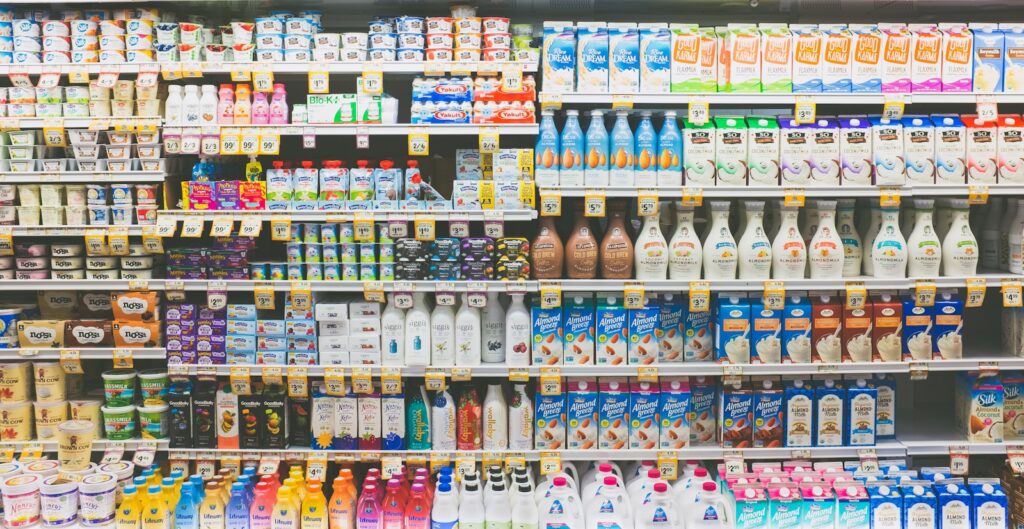
10. **Bubble Bath and Other Personal Products**After battling the crowds and successfully unloading your groceries, the thought of a long, relaxing soak in the tub might sound like pure bliss. And while indulging in some well-deserved self-care is certainly encouraged, buying your bubble bath or other personal care products directly from the supermarket shelf is often a costly mistake that, over time, can significantly eat away at your hard-earned savings. It’s an easy trap to fall into when everything you need seems to be under one roof.
Supermarkets frequently charge a hefty premium for these convenience items, banking on the fact that you’re already there and might not want to make a separate trip to another store. This unspoken convenience fee quickly adds up. For instance, a bottle of Dr. Teal’s Bubble Bath might set you back around $7 at your local grocery store. However, the very same size bottle could be found for just $5 at a discount retailer like Walmart, representing an immediate and easy saving of $2 on a single purchase. These small price differences, when accumulated across all your personal care items, become substantial.
For even more consistent and substantial savings on the toiletries and personal care items you use most regularly, consider leveraging online platforms and subscription services. Emily Guy Birken suggests, “You can save on your toiletries by setting up a subscription for the ones you use most through something like Amazon’s Subscribe and Save, which can cut as much as 15% off the regular price.” This smart strategy ensures your favorite products are delivered right to your door at a reduced cost.
Beyond the monetary savings, utilizing these subscription services eliminates the need for an extra trip to a different store or even an additional supermarket visit. This means you save precious time, avoid impulse buys, and can enjoy your bubble bath, shampoo, or body lotion guilt-free, knowing you’ve made a smart financial choice. It’s an effortless way to keep your bathroom stocked and your wallet happier, streamlining your shopping habits for better value.
Read more about: The Definitive Guide: 12 Top-Rated Car Wash Soaps Under $15 for a Professional Shine

11. **Over-the-Counter Medications**When that headache strikes or allergies flare up, the quickest solution often seems to be grabbing an over-the-counter medication while you’re doing your regular grocery shopping. However, this immediate convenience comes at a significant financial cost. According to money expert Jade Warshaw, grocery-store markups on common medications like painkillers, allergy tablets, and antacids could be as high as an astonishing 70%.
Let’s look at a common example: a 100-count package of Tylenol Extra Strength caplets might cost you $12.59 at the supermarket, equating to about 13 cents per caplet. Compare that to buying the same package at Target or Walmart, where it would likely be $10.97, or approximately 11 cents per caplet – a 13% markup at the grocery store. The savings become even more dramatic at a warehouse club like Costco, where a large 325-count package of Tylenol could be purchased for $20.49, bringing the cost down to just 6 cents per pill.
If you find yourself in a genuine pinch and absolutely need immediate relief, Warshaw advises a smart alternative: opt for the generic store brand. A 100-count box of store-brand acetaminophen caplets at the supermarket costs just $4.79. Both the brand name and the generic contain the exact same active ingredient – 500 mg of acetaminophen – but by choosing generic, you can achieve a remarkable 62% saving.
It’s a simple switch that offers identical relief without the inflated price tag, ensuring your wallet doesn’t suffer along with your symptoms. This strategy allows you to prioritize your health and well-being without falling victim to the convenience premium charged by grocery stores for these essential but often overpriced items. Think smart, save more, and feel better in more ways than one.
Read more about: Pharmacy Secrets Revealed: 9 Cold & Flu Remedies Pharmacists Wish You’d Stop Grabbing Off the Shelf

12. **Car Items**It might seem incredibly convenient to toss a bottle of antifreeze, a package of cleaning wipes, or even some motor oil into your cart during your weekly grocery run. After all, the supermarket is a one-stop shop for so many household needs, and consolidating errands feels efficient. Yet, as Emily Guy Birken emphatically points out, “Just because you can pick up antifreeze or other automotive supplies at the grocery store, it doesn’t mean you should.” This seemingly simple convenience often conceals a double whammy for your wallet and your vehicle.
The issues here are twofold and significant: you’re not only likely to pay an inflated price for these items, but you could also inadvertently compromise on quality or even purchase the wrong formula for your car. Grocery stores typically carry a limited selection of automotive products, often featuring lesser-known brands or generic options that might not be the best fit or offer the same performance as specialized products. When it comes to something as important as your car’s maintenance, getting the right product, and one of good quality, is absolutely paramount to ensure its longevity and safe operation.
Consider Armor All cleaning wipes as a prime example of this supermarket trap. A 30-count package of these wipes might set you back $7.50 at the grocery store. However, for the very same price, you could typically buy a *two-pack* of those identical Armor All wipes at a larger retailer like Walmart or an automotive supply store. This stark price difference clearly illustrates how much you might be overpaying for the sheer convenience of a grocery store purchase, often doubling the cost for a single item.
For automotive necessities, it’s always a smarter strategy to visit stores that specialize in car care products, or at least larger discount retailers with dedicated automotive sections. These stores offer a wider selection, competitive pricing, and knowledgeable staff who can help you choose the correct formulas and brands for your specific vehicle. Breaking the habit of buying car items at the grocery store is a simple step towards better value and potentially better-quality products for your vehicle, saving you money and preventing future headaches down the road.
Read more about: Time-Tested Treasures: 15 Vintage Hand Tools That Have Endured, Becoming Surprisingly Valuable to Collectors Today

13. **Party Supplies**Planning a party often involves a seemingly endless list of things to buy, from delectable food and refreshing drinks to eye-catching decorations and essential tableware. It feels perfectly natural, then, to grab paper plates, festive cups, plastic cutlery, and a colorful tablecloth from the supermarket while you’re already there picking up the ingredients for your delicious spread. This convenient bundling of purchases, however, comes at a significant and often completely unnecessary cost that can quickly inflate your party budget.
Both Emily Guy Birken and money expert Jade Warshaw are in agreement on this point: you’ll likely end up paying double – sometimes even more – at the supermarket for essential party items like plastic tablecloths, Mylar balloons, durable plastic utensils, and even simple birthday candles. Supermarkets are savvy; they strategically bank on your desire for a hassle-free shopping experience. They know you’re often in a rush, with a full cart and a celebration on your mind, and they mark up these convenience items considerably because of that.
The smarter and far more economical strategy for party planning involves making a quick, dedicated trip to a dollar store, a discount retailer, or a specialized party supply store. These retailers focus on these types of goods and can offer them at a mere fraction of the supermarket price. You might find a complete set of tableware for the cost of just one supermarket pack, or a wide array of decorations for what you’d pay for a single Mylar balloon elsewhere.
Making this small, intentional detour ensures your celebration can be just as festive and fun, if not more so, without putting an unnecessary strain on your bank account. A little foresight and planning, perhaps even purchasing these non-perishable items in advance of your grocery trip, can lead to significant savings on your next gathering. This savvy approach allows you to stretch your party budget much further, proving that you don’t have to break the bank to host a memorable event.
Skip the Gimmicks and Save More
Read more about: Your Practical Guide to a Plastic-Free Home: 14 Simple Swaps for Everyday Life
Supermarkets are designed to encourage impulse spending. Many of the products listed above may seem helpful or exciting, but they often mask poor value with convenience or clever marketing. By recognizing which items are a waste of money, you can shop more strategically and make every dollar count. Small changes like cooking from scratch, avoiding single-use items, and skipping trendy packaging can add up to big savings over time. Being mindful of where your money goes helps reduce financial waste and supports smarter consumer choices.

